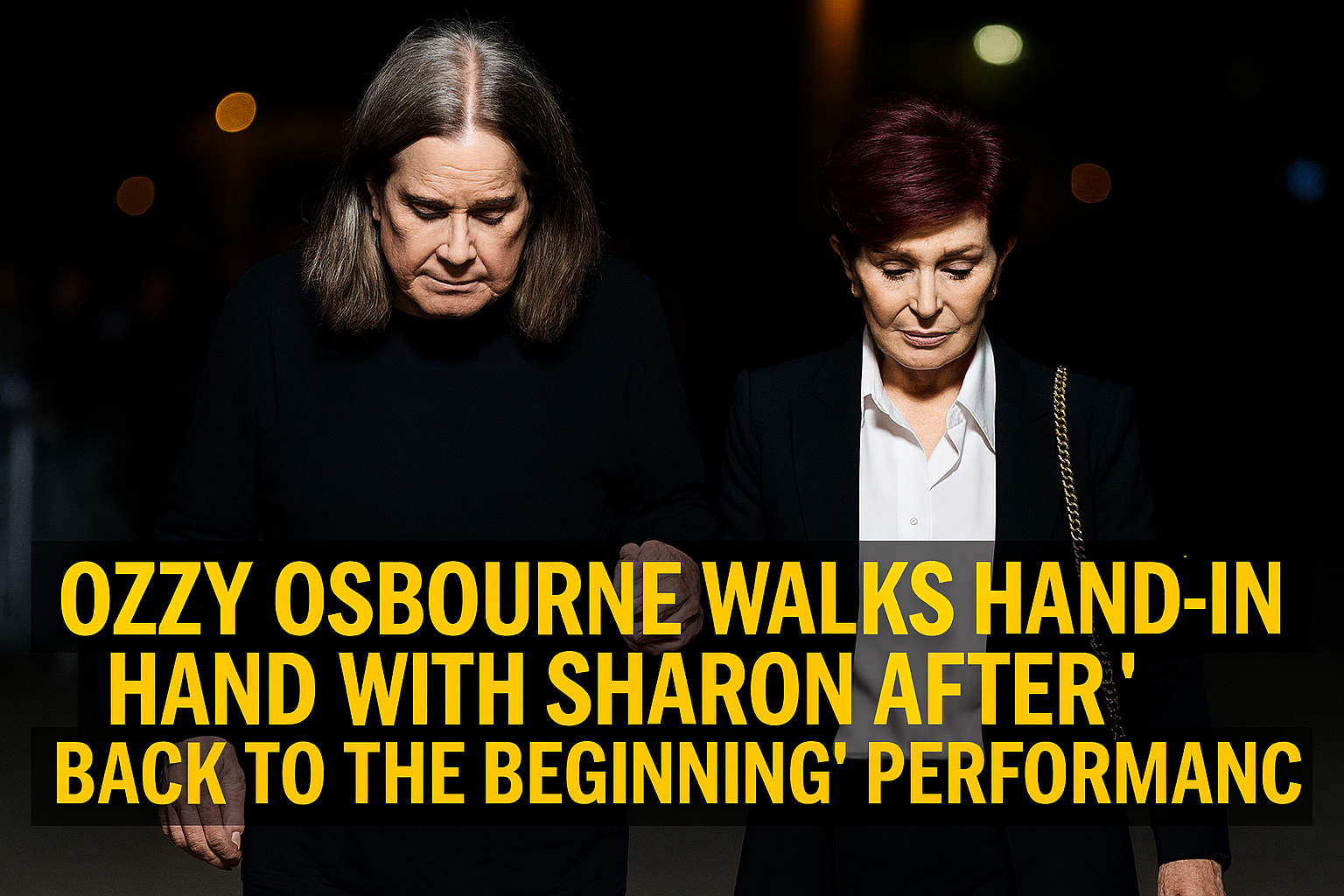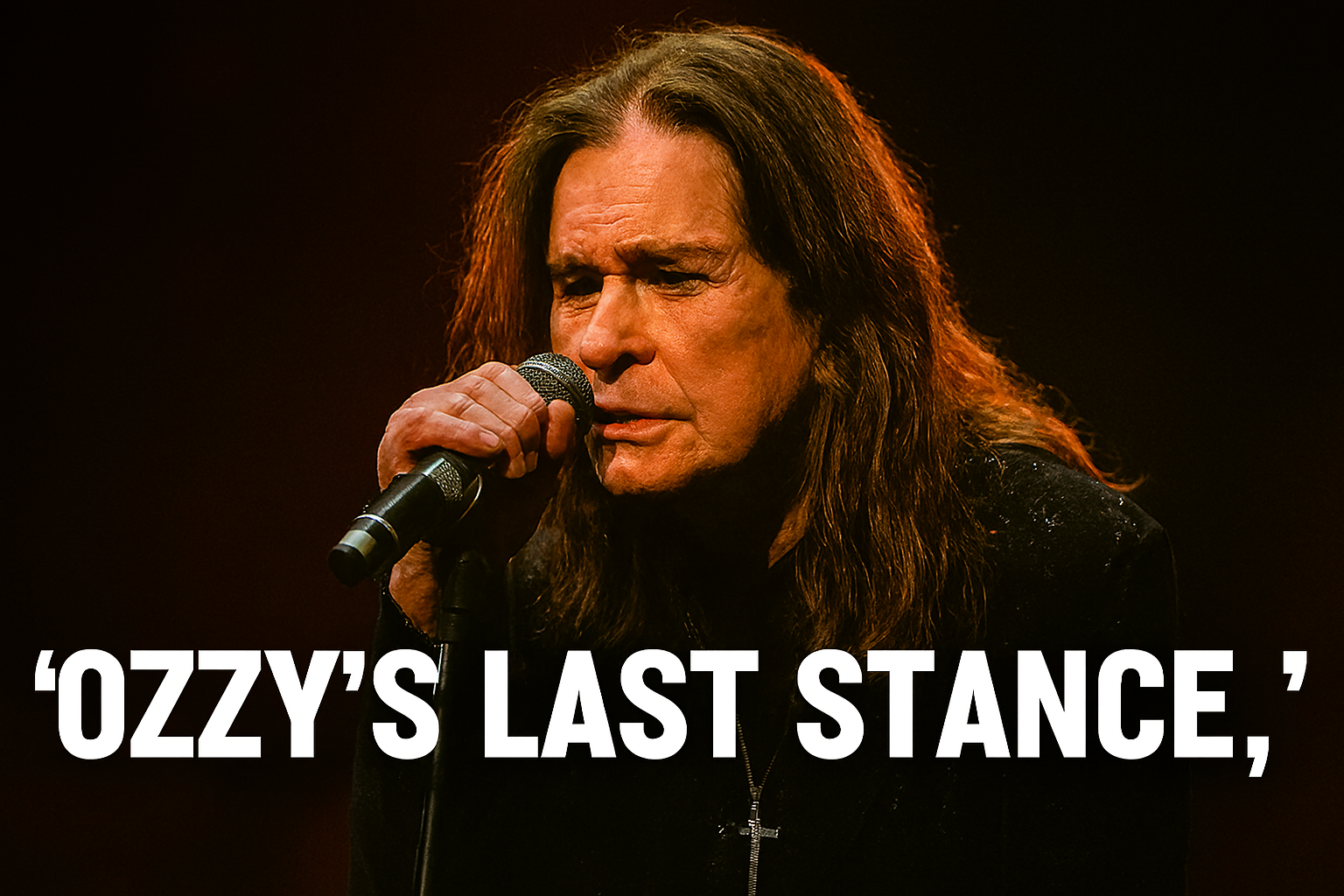A Farewell Etched in Steel and Sweat
On July 5, 2025, at Villa Park in Birmingham, England, Ozzy Osbourne took the stage for the last time. The event, titled Back to the Beginning, was more than a concert—it was a full-circle moment for the Prince of Darkness, returning to his hometown to close out a legendary career. But what made this night unforgettable wasn’t just the music—it was the chair.
Ozzy, 76 and battling Parkinson’s and heart disease, was no longer able to stand for a full set. Instead, he performed seated in a throne-like black chair adorned with skulls and bat motifs—a gothic symbol of his persona and a practical necessity. Yet, as he sang through five solo tracks and reunited with Black Sabbath for four more, the chair became something else entirely: a vessel of defiance.
The Chair as a Symbol
This wasn’t just a seat—it was a statement. Ozzy’s decision to perform, despite his physical limitations, turned the chair into a symbol of willpower. It represented the idea that rock isn’t about perfection—it’s about passion, grit, and showing up even when the body falters.
Fans and critics alike were moved. Zakk Wylde, Ozzy’s longtime guitarist, said, “Just the fact that he willed himself to do that thing… it’s always just a speed bump and we’ll get through it”. That chair held a man who refused to let illness define his final act.
A Moment That Shook the Crowd
As Ozzy was helped onstage and lowered into the chair, the crowd of over 40,000 fell silent. Then, as the first notes rang out, the silence turned to thunder. The audience roared—not just for the music, but for the courage it took to be there. Ozzy’s son Louis later wrote, “I was sobbing at times. It was emotional. It was the end of a phenomenal 57-year career”.
The chair, positioned center stage, became the focal point of the night. It was where Ozzy sang “Crazy Train” and “War Pigs” with fire still in his voice. It was where he looked out at his fans one last time, eyes gleaming with gratitude and defiance.
Immortalizing the Throne
There’s growing support among fans and music historians to preserve the chair in a museum or memorial. Some suggest it be displayed in a glass case at the Rock & Roll Hall of Fame, others propose a permanent exhibit in Birmingham. The idea isn’t just sentimental—it’s symbolic.
This chair held Ozzy Osbourne as he took his final bow. It bore the weight of a man who gave everything to music, even when his body begged him to stop. It deserves to be remembered—not as a prop, but as a piece of rock history.
A Legacy Beyond the Stage
Ozzy’s final performance wasn’t flawless. His voice cracked, his movements were limited, and the vulnerability was visible. But that’s what made it powerful. The chair didn’t hide his condition—it framed it. It reminded everyone that legends aren’t immortal, but their spirit can be.
The throne-like design, with its gothic embellishments, echoed Ozzy’s aesthetic. It was theatrical, yes—but also deeply personal. It was the last place he performed, the last place he connected with fans, and the last place he proved that rock is about heart, not posture.
Final Reflection
Ozzy Osbourne’s chair from Back to the Beginning is more than a seat—it’s a symbol of endurance, artistry, and farewell. It deserves to be preserved, not just for what it held, but for what it represented. In that chair, Ozzy didn’t just perform—he transcended.
As fans continue to share footage and stories from that night, one image stands out: Ozzy, seated but unbroken, singing into the void with fire in his eyes. That chair didn’t just support him—it carried the weight of a legacy.









